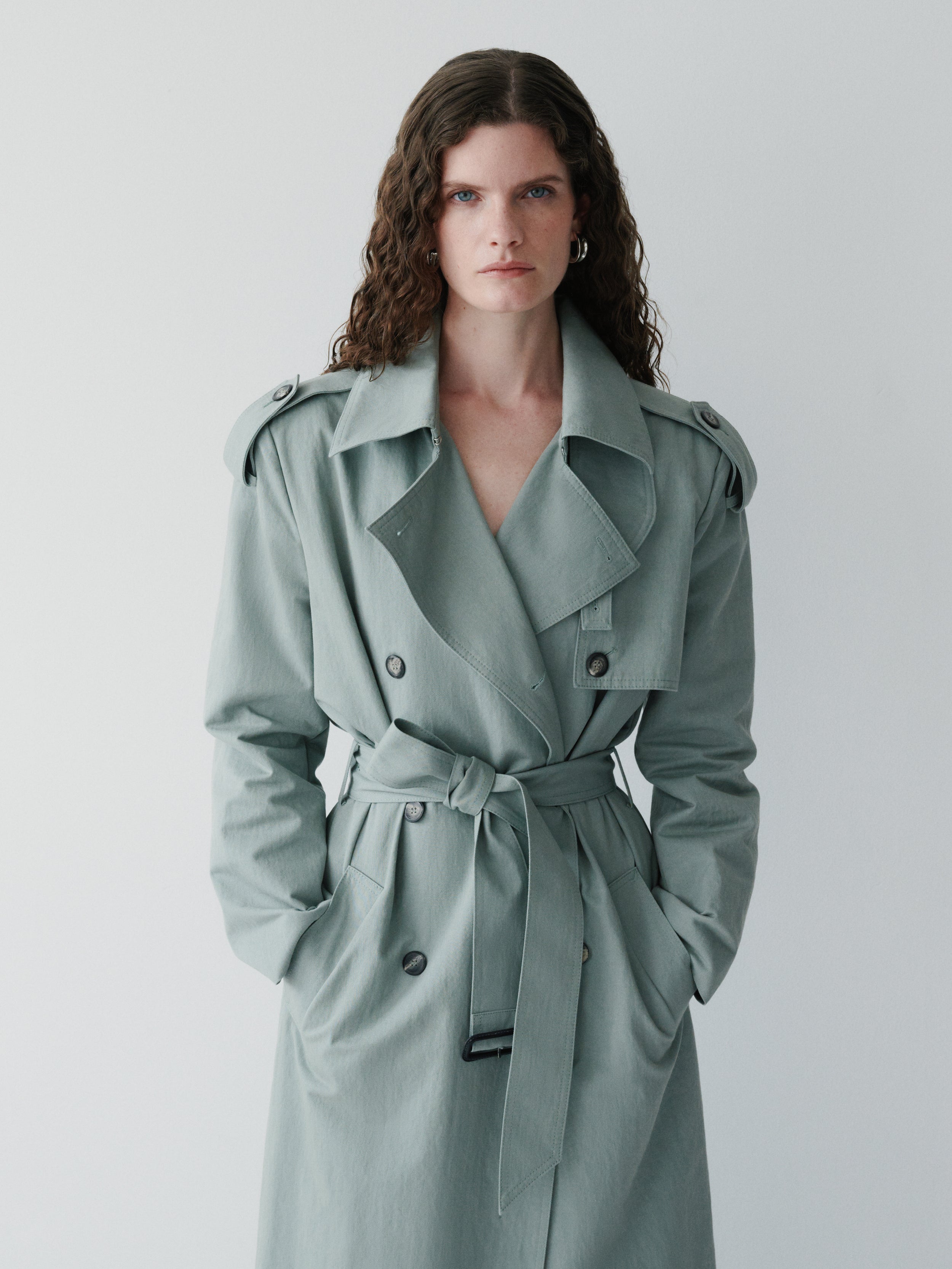INTRODUCTION
Since our founding in 2016, the commitment towards sustainability has been at the heart of our mission, driving us to reshape the fashion industry and set a new standard for a more responsible future.
This Season Impact Report, spotlighting our Fall/Winter 2024 Collection, offers a comprehensive look at our sustainability journey. From designing and producing our collections with an emphasis on environmental and social responsibility to enhancing transparency across our supply chain, pricing, and CO₂ footprint, we strive to make a positive impact. Our collaboration with Klima-Kollekte, Amfori BSCI, the Partnership for Sustainable Textiles, and the Canopy Style Initiative further support our commitment to meaningful change.
Please enjoy reading.

MATERIALS & INNOVATION
Crafting the Future through Responsible Fabrics & Practices
We strive to incorporate mono-materials – single-material fabrics made entirely from one type of fiber – across as many product groups as possible, given their excellent recyclability and reduced environmental impact. This approach is more feasible for items like knitwear, which can be crafted from a single yarn, and more challenging for tailored pieces like suits.
Additionally, we rely on a curated library of low-impact materials, including RWS Wool, NAIA™ acetate, and organic cotton for e.g. shirts, tops and denim.
Over the past two years, we have also steadily reduced the proportion of fossil-based synthetic fibers, such as polyester. In the F/W 2024 collection, synthetic fibers represent only 17%, making up the smallest share of the collection (see graphic below).
For a closer look at our careful fabric selection process and the materials we use, explore our Fabrics page.

PRIORITIZING LOW-IMPACT MATERIALS
OUR COMMITMENT TOWARDS RESPONSIBLE SOURCING
In our material sourcing process, we thoroughly examine elements like fabric composition, the adoption of low-impact methods, eco-toxicity, and the origins of our supply chain. This method allows us to reduce our environmental footprint while contributing positively to local economies and communities.
In our Fall/Winter 2024 collection, 69% of our styles primarily consist of (>50%) A or B materials:
- 52% Preferred Materials Class A (“Target”)
- 17% Preferred Materials Class B (“Target”)
- 11% Preferred Materials Class C (“Transition”)
- 20% Preferred Materials Class D (“Transition”)
We aim to steadily increase the share of A and B materials each season, guided by our Preferred Material Framework. However, the Category Mix in each Collection influences the ratio each season.
* The data is based on the number of styles in the F/W 2024 collection that consist of at least 50% of a material from the respective material group.
Eco-friendly vs. conventional materials
PARTNERS & PRODUCTION
Prioritizing Long-Term Partnerships and Local Production
At IVY OAK, we carefully choose manufacturing and fabric suppliers who share our values of sustainability and craftsmanship. Most of our partners are based in Europe, selected for their expertise, proximity, and commitment to responsible practices.
One such partner is Manteco, a respected Italian textile company with a long history of quality and sustainability. We’ve also recently partnered with ELYAF, a Turkish fabric supplier known for its eco-friendly materials and transparent, socially compliant supply chain.
Through long-term relationships with trusted partners in countries like Romania, Portugal, Turkey, and China, we ensure efficiency and transparency in our Supply Chain. With the majority of our latest collection made in Europe, we continue to prioritize local production, supporting regional economies while staying true to our sustainable ethos.
*Please note that each season's data is shaped by the category mix, specific designs, and the expertise of the respective suppliers.
WHERE WERE THE FABRICS PRODUCED?
WHERE WAS THE COLLECTION PRODUCED?
COMMITMENT TO TRANSPARENCY
Insights into our Materials, Pricing, and Production
Transparency is essential to any sustainability endeavour. To give you a closer look at how our products come to life, we’ve selected three key pieces from our Fall/Winter 2024 collection — the CAROLINE ANN Oversize Wool Coat, MADELIN IDA Bridal Dress, and PRIJANKA Wide Leg Jeans with the BERENICE Shirt — and we’re pleased to share insights into their origins, materials, and pricing.
The pricing graphs below break down how each product’s cost is allocated. Production costs are paid to our trusted partners, while the margin between production costs and retail price helps cover our in-house expenses, from design and product development to operational and warehouse costs, and our ongoing sustainability initiatives. We work to keep prices fair by focusing on quality and cutting unnecessary costs, with savings reinvested to enhance garment quality.
In support of further supply chain transparency, we also publish supplier information on the Open Supply Hub, an open-source platform for mapping global textile production facilities. Each facility receives a unique ID, making it easy to identify and track, thus contributing to industry-wide accountability and transparency.
FOOTPRINT
Reducing our Environmental Impact
Since 2020, we have been dedicated to not only avoiding and reducing CO₂ emissions but also offsetting those we cannot yet eliminate.
In the first half of 2024, the shipping and returns of your orders, the operation of our online shop, as well as business flights by our employees (where train travel was not possible) resulted in a total of 52 tons of CO₂ emissions. This amount is 4.8 times the average per capita CO₂ emissions in Germany (10.8 tons).* This allowed us to achieve a 25.67% reduction in CO₂ emissions compared to the second half of 2023.
Once again, we have offset these emissions through our partner Klima-Kollekte. Our contributions support Gold Standard-certified climate protection projects that advance renewable energy and energy efficiency, such as the Bagepalli Biogas Program in India. The project provides biogas systems for domestic kitchens, improving both health and sustainable farming practices. By reducing cooking time, it particularly empowers women, offering them more opportunities for education and personal development.
*Source: German Environment Agency, 2023
TOWARDS GREATER TRACEABILITY
Introducing Product IDs
Each of our products follows its own unique journey. In compliance with upcoming legislations for digital labeling, we’re excited to introduce QR codes on all our product care labels from this collection onwards, linking to a dedicated Digital Product Passport (Product ID).
Our product labeling partner is developing a software platform that will eventually allow us to manage and expand Product ID data independently. The current setup includes essential product details, such as composition, origin, care instructions, and links to additional sustainability information., is developing a software platform that will eventually allow us to manage and expand Product ID data independently. The current setup includes essential product details, such as composition, origin, care instructions, and links to additional sustainability information.
We aim to enrich these pages over time with additional data, including sourcing and supply chain information, in-depth material descriptions, care guidance, and tips for garment repair to extend the life of each piece. This marks an important step toward greater transparency and traceability of our products.












